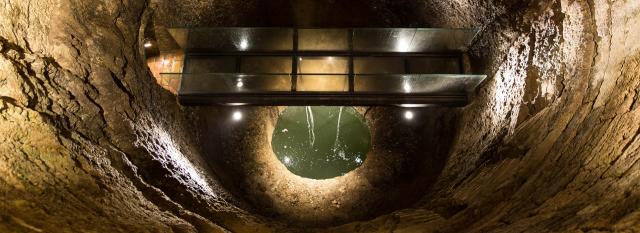Origins and history of the Etruscan well
Etruscan Well

Construction work on the Pozzo Etrusco (Etruscan well), built to supply the growing urban population, has been dated to the latter half of the 3rd century B.C. Over the years, beginning in the 15th century the structure has been rebuilt several times suggesting an uninterrupted use as a water supply by the local community. Such continuity tends to be confirmed by the well curb, evidence the monument was then located at street level in the middle of what is now Piazza Piccinino (formerly Piazza dei Gigli).
The well curb, presumably dating to the 14th or 15th century, suffered repeated damage over time and was originally built between the entrance to Palazzo Sorbello and the Chiesa della Compagnia della Buona Morte. It was restored several times by the Municipal authorities (Comune di Perugia) but after serious damage caused the railing to plunge to the bottom of the well, it was decided to relocate the well curb to the lawn in front of the Tempio di Sant’Angelo where it remained until 1973 when it was returned to its original location.